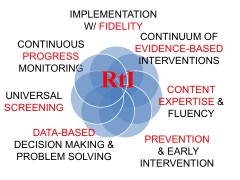What is School-wide Positive Behavioral Interventions and Supports (SWPBIS)?
SWPBIS is an operational framework within a multi-tiered system of support for achieving important learning and social outcomes for ALL students. It ensures all students have access to the most effective and efficient instructional and behavioral practices available. SWPBIS is NOT a curriculum, intervention, or practice; it is a decision making framework that guides selection, integration, and implementation of the best evidence-based academic and behavioral practices for improving important academic and behavior outcomes for all students. (OSEP Center on Positive Behavioral Interventions and Supports.)
SWPBIS Emphasis
SWPBIS theory of action emphasizes the use of measurable “real time” data for decision making; making sure the data is cultural validity and the evidence-based practices for supporting student behavior is culturally relevant; the systems supporting staff behavior includes cultural knowledge of differences in order to achieve the important social, academic and equity outcomes for the organization.
|
|
SWPBIS Outcomes
Outcomes associated with the implementation of SWPBIS when at a minimum of 80% fidelity are
|
|
SWPBIS Continuum in a Multi-tiered System of Support
SWPBIS is a multi-tiered behavior framework for enhancing the adoption and implementation of a continuum of evidence-based interventions to achieve academically and behaviorally important outcomes for all students. It begins with the whole school or organization and is a data driven, prevention-based framework for improving learning outcomes for all students through a layered continuum of evidence-based practices and systems.
SWPBIS schools structure their evidence-based practices and systems of support into a multi-tiered approach based on individual, targeted group and school-wide student need. A multi-tiered prevention logic requires all students receive supports at the universal level with more intensive behavioral and academic supports provided when a student requires more support to reach social and academic success. SWPBIS also uses behavioral science across all layers of the continuum. Understanding the function or the “why” of behavior and academic difficulties is central to the underlying theory of action for SWPBIS. Even with SWPBIS in place we know some students will need additional support and practice. We provide that support and practice through targeted evidence-based behavioral interventions. Targeted interventions are designed for a smaller portion of students with some risk. The goal of targeted interventions is to reduce or eliminate this risk. Usually this layer of intervention is short term and focuses on specific academic and social skill development. When students don’t respond to targeted interventions, or have intensive behavioral needs, we add an additional layer of support that is individualized and function-based. Interventions at this level are highly specific, individualized, and require frequent monitoring. Students with this level of need may require several months or years of intervention.
As the magnitude of the need for academic and behavior increases,
|
|
School-wide Positive Behavioral Interventions
and Supports for Beginners
Core Principles of SWPBIS
We can effectively teach pro-social behaviors to all children. SWPBIS practices are founded on the beliefs that all children and youth can exhibit appropriate behaviors when taught, reinforced and monitored.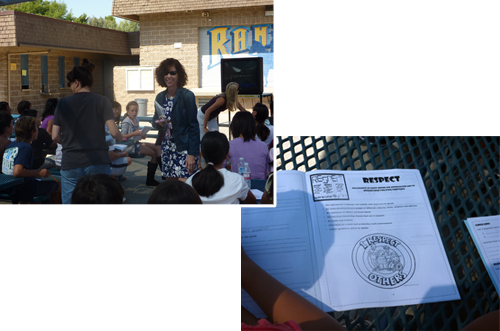
We must intervene early, regularly and be proactive in our planning for positive, pro-social school-wide and community cultures. Highly effective and efficient universal (Tier I) systems, informed by current continuous progress monitoring demonstrate strong empirical support for intervening with at-risk children, youth and their families.
A multi-tiered service delivery system matching the needs of the community, families, teachers, and students is a cornerstone of SWPBIS. To achieve high rates of student success behavioral and academic instruction must be differentiated in both content and intensity. 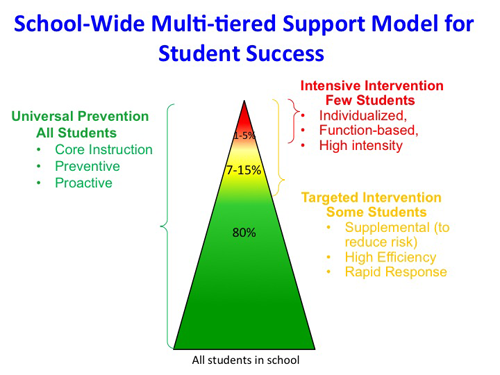
A belief that research-based, scientifically validated interventions should be used whenever they are available, match the demonstrated needs and provide the best opportunity for us to be successful in achieving our academic and behavioral outcomes. http://dww.ed.gov 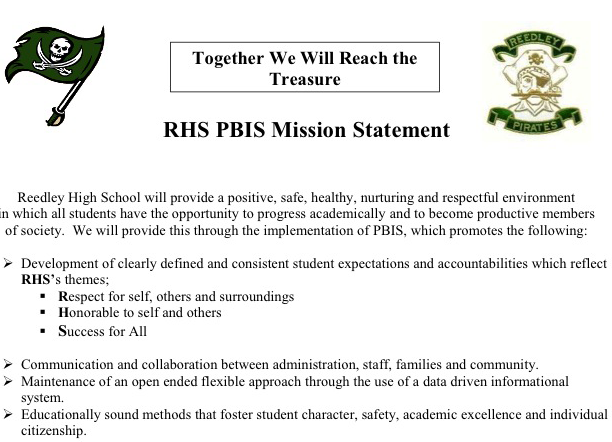
Frequent, reliable and valid progress monitoring data is crucial in determining if a student, a group of students or a community is improving and meeting the desired outcomes. Being able to determine the effectiveness of an intervention early is important to maximize the impact teaching academic and behavioral skills. http://www.swis.org
Your not a PBIS school if your not using DATA! (Dr. George Sugai) Data based decisions regarding a student or a group of students is central to SWPBIS practices. This principle requires schools to have data collection systems allowing for data to be used for behavioral and academic planning decisions. You must be able to "drill-down" to move from a problem statement to a precise problem statement.
Outcome assessment is used for three different purposes. 1) screening: comparison per day per month for total office discipline referrals, 2) diagnostic: determination of data by time, location, behavior, student/youth, and 3) progress monitoring: to determine if behavioral/academic interventions are producing desired effects. http://www.swis.org
Fidelity measurements evaluate if we are ìdoing what we said we would do. ì Implementing SWPBIS with fidelity to the model is paramount in replicating the expected outcomes. https://www.pbisassessment.org
Primary (Universal) Level: moves us from exclusionary, reactive practices to inclusive proactive systems change practices.
Schools, Districts and Communities work together at establishing a common language, common practices and a common vision for a positive pro-social environment.

Click here to download a pdf version of this checklist.
Behavioral Expectations: teaching what we want students to do
PBIS schools target specific behaviors for change in the universal level of intervention. This consists of rules, routines and physical arrangements that are developed and taught with consistent and regular positive feedback by school staff, parents and community. Research indicates that 3-5 behavioral expectations positively stated, memorable, and significant to the local culture are effective in establishing positive social climates. Schools will often choose the positive reframing of the most common misbehaviors. For example a school or community with respect or bullying problems would choose Respect Self and Others as one of their behavioral expectations.

Teaching Matrix: labeling appropriate behaviors in action
Schools, families and communities build teaching matrices where they explain what you would see and hear if a student were demonstrating each of the 3-5 behavioral expectations across all relevant settings in the school, home and community. These identified expected behaviors are then taught to all students in the settings they occur and students are recognized when demonstrating the desired expected behaviors. The students are shown non-examples of the desired behaviors, closer approximations and the desired expected behaviors. Students are allowed to practice and receive feedback on their performance during the trainings.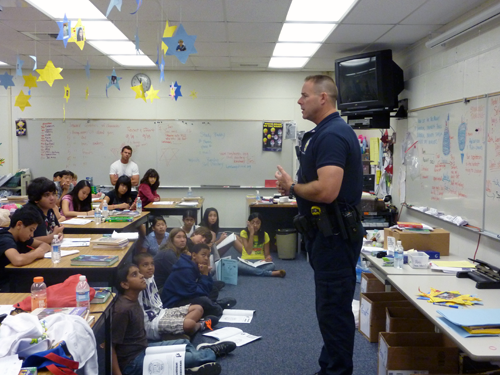
Recognition/Feedback Plan: School-wide and classroom recognition systems
Schools establish positive recognition and feedback systems to develop the internal motivation ìto do the right thingî and the pro-social skill sets for all students.
Data for Decision-Making: team initiated problem solving
School-based teams use behavioral and academic data to determine if they have a problem, drill-down for clarity of the problem and use research validated practices that address the precision problem statement(s). Outcome data is analyzed frequently and used for evaluating student progress and effectiveness of the implementation. These teams also evaluate the level of implementation fidelity-ìare we doing what we said we would do?î








